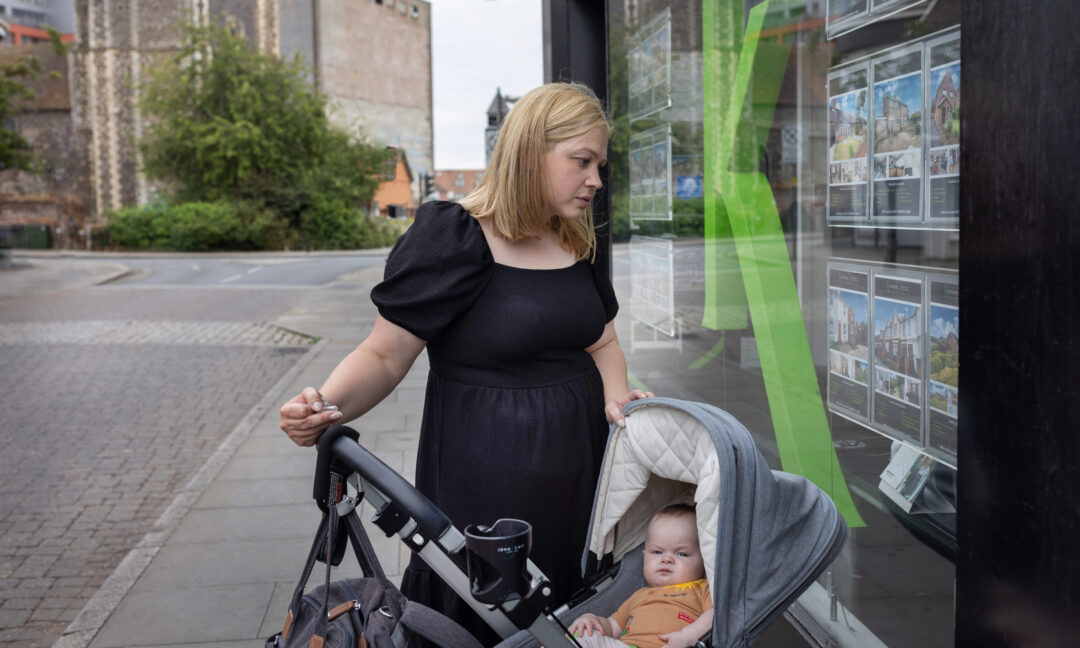Life as a first time buyer can be confusing. Getting to grips with the terminology and understanding the rules can feel overwhelming.
That’s why we thought we’d explore what, for many, is the first question they ask when they’re buying their first home. Knowing how much you can borrow is essential when you’re planning your property search. So, read on to find out how things work.
How much can first time buyers borrow?
Firstly, you’ll have to meet affordability criteria. These are the factors that lenders assess before they decide whether to lend to you, and if so, how much.
It’s fairly common for lenders to let people borrow 4.5x their income. However, some will be prepared to lend up to 6x someone’s income.
While this won’t give you an accurate figure, it’s a useful place to start if you want a rough idea. It goes without saying that lenders will look at a lot more than that though. Their final decisions will be based on your individual circumstances.
The main factors that lenders consider when assessing affordability are –
- Your income – as we’ve already mentioned, your income will play a key role in deciding how much you can borrow. This will include your wages but may also include your pension and certain benefits.
- Your employment status – lenders will ask everyone who will be on the mortgage to provide evidence of their income. If you’re self employed, you may find there are a few extra hurdles to clear though. This generally means you’ll need to provide additional evidence about your income, compared with an employee. This will give your lender a comprehensive view of your financial situation. They can then make a responsible decision about how much to lend you.
- Your outgoings – as well as how much you spend, from your water bill to your gym membership, lenders will look at how you spend. Therefore, you should ensure commitments such as loans and credit cards are paid on time. It’s also important to remain within your credit card balance or overdraft limits.
- Your loan to value (LTV) ratio – this is the proportion of the property’s value that you want to borrow. For example, with a 10% deposit, you’ll have a 90% LTV ratio, as you’ll borrow 90% of the property’s value. A lower LTV ratio is generally seen as lower risk by lenders. This can mean they’ll usually offer more favourable terms. It’s still possible to get a mortgage with a deposit as low as 5% though.
- Your credit history – this may involve a credit score, which summarises your credit history with a single number. This number is based on various criteria that rate how reliably you’ve repaid any money you’ve borrowed. Not all lenders use credit scores though. A credit check also looks at your borrowing history but doesn’t rate it numerically. This can be useful if you’re a first time buyer without much previous credit to allow you to build a high score.
- Your debts – any existing debts you have will affect your level of disposable income. For example, if you make a £250 monthly loan payment, you’ll have less money available for your mortgage payments. So, while well managed debts won’t stop you from getting a mortgage, they can impact how much you can borrow.
We’ve written a useful companion blog if you want to delve into this topic more.
Who qualifies as a first time buyer?
Some lenders offer products designed for first time buyers. Others will simply offer most of their standard mortgage products to first time buyers instead.
It’s important to understand who qualifies as a first time buyer to ensure you don’t set off down the wrong path. A first time buyer in the UK is generally someone who is buying their first property, whether residential or buy to let.
If you’ve owned a residential property outside the UK, you generally won’t qualify. Additionally, if you’ve owned a residential property without having to buy it, perhaps due to inheritance, it’s unlikely you’ll qualify.
However, you may have owned a commercial property, such as an office or shop. As they’re classified differently, you may be able to retain your first time buyer status.
Some lenders may be prepared to offer you a first time buyer product if you haven’t owned a property for a few years. You’ll need to check with individual providers to see if this is an option though. Additionally, some lenders will treat you as a first time buyer if you’ve been through a divorce or separation, having previously owned a home.
Do first time buyers need a deposit?
Saving for a deposit can be difficult, especially if you’re paying rent at the same time. However, some good news arrived in July 2025 when the government introduced their Mortgage Guarantee Scheme.
The Scheme aims to make it easier for buyers across the UK to get a loan with as little as a 5% deposit. It provides a government-backed guarantee, insuring providers against a portion of any potential loses on these mortgages. Not all providers offer 95% mortgages though, so shop around. You may find they won’t lend you the maximum amount if you don’t meet the affordability criteria though.
Saving for a larger deposit, such as 10%, means you’ll have a lower loan to value (LTV) ratio, which can give you a better chance of securing a lower interest rate.
Do first time buyers get better mortgage rates?
Mortgage rates for first time buyers are generally comparable to other buyers. The rate you pay will generally be based on your LTV ratio, rather than your status as a first time buyer.
However, first time buyers may benefit from government schemes including –
- First Homes Scheme: which may allow you to buy a home for 30% to 50% less than its market value. It can involve buying a new home from a developer. Or you may buy a home via an estate agent that someone else previously bought through the scheme. It only applies if you’re buying your only or main residence though.
- Mortgage Guarantee Scheme: as we mentioned, this scheme can help you get a mortgage for up to 95% of the property’s value.
- Lifetime ISA (LISA): can help you buy your first home if you are 18 or over but under 40. You can save up to £4,000 each tax year, until you turn 50. However, you must make your first payment before you turn 40. The government will add a 25% bonus to whatever you save in your LISA, up to a maximum of £1,000 per tax year.
While these schemes can help you gain a mortgage, they won’t necessarily impact your mortgage interest rate.
It’s also worth looking at products such as joint mortgages, or family assisted mortgages such as Joint Borrower Sole Proprietor. These products allow you to buy a property with one or more other people. This may in turn make buying a property more affordable.
Does Stamp Duty affect first time buyers?
The amount of Stamp Duty Land Tax (SDLT) you pay is based on the value of the property you’re buying. As a first time buyer you’ll generally qualify for a more favourable rate than other buyers. If you’re buying a property with another person, you’d both need to be first time buyers to qualify though.
From 1 April 2025 first time buyers in England and Northern Ireland don’t have to pay SDLT on properties up to a value of £300,000. If you’re buying a property valued between £300,001 and £500,000, you’d have to pay a 5% fee on the portion above £300,000 though. And if your first property is valued at £500,000 or more, you’d have to pay the same rate as other buyers.
In contrast, if you aren’t a first time buyer, you’d have to start paying SDLT on properties valued above £125,000.
Buyers in Wales will need to pay the Land Transaction Tax, which works differently.
If you’re buying a home with someone else, you both need to qualify as first time buyers to benefit from reduced SDLT rates.
Overall, if you’re buying your first property, it’s important to know the ins and outs of the property market. Knowing which government schemes are available, along with the relevant SDLT rules will help you work out how much you might borrow. You can then think about which mortgage is best for you.


















